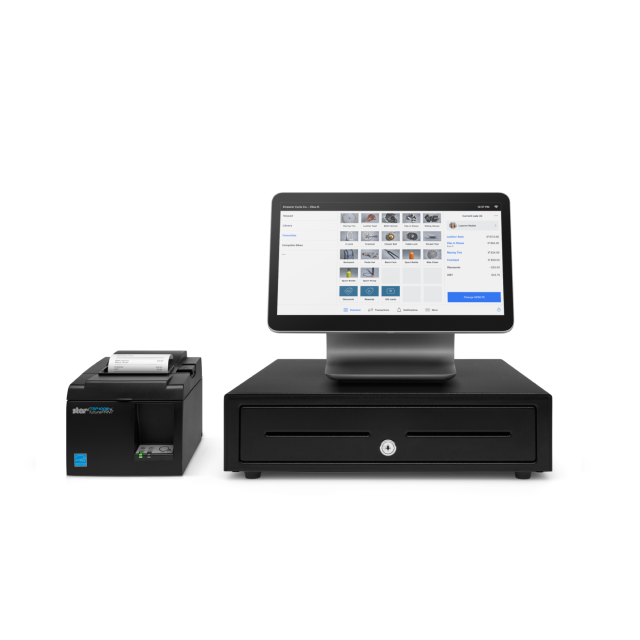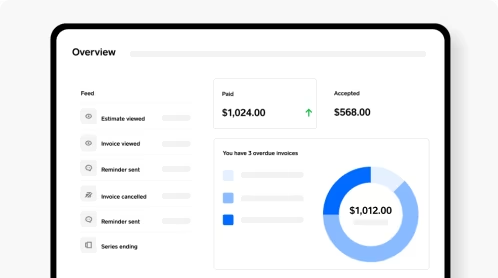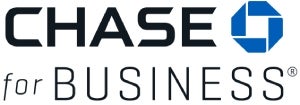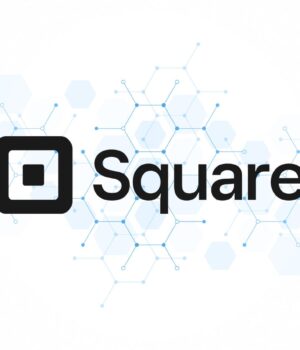Square’s fast factsOur rating: 4.5 out of 5 Starting price: $0/month, plus processing fees Key features:
|
|---|

Square is a major player in the payment processing industry. But is it the right payment solution for you? In my years of reviewing point-of-sale systems, I’ve become familiar with what different business types expect of payment software. Square is an interesting product that definitely stands out.
This guide provides some insight into Square as a POS and payment provider and what it has to offer. I will be going over what the brand promises, what it delivers, and how it stacks up against some of its competitors.
Square’s pricing
For me, one of Square’s best features is its small business-friendly pricing: you can sign up for free, claim a card reader for free, and use their payment processing without paying a monthly subscription. All you’ll be on the hook for are the processing fees. If you only sell in person and can be served effectively by a magstripe reader, you could get started for $0 and only need to pay 2.6% + $0.15 per transaction.
Here are some specifics:
Monthly subscription tiers
- Free: No monthly subscription fee, just processing fees; covers core POS, online store and checkout, invoice, virtual, gift card, and customer directory functionality
- Plus: Starting at $29/month plus processing fees
- Premium: Custom monthly pricing, plus processing fees
Processing fees
- In-person: 2.6% + $0.15 per transaction
- Online: 2.9% + $0.30 per transaction
- Manual entry: 3.5% + $0.15 per transaction
- Invoices: 3.3% + $0.30 to 3.5% + $0.15 per transaction
Popular add-ons
- Advanced invoicing: $30/month
- Payroll: Starting at $35/month + $6/payee/month
- Email marketing: Starting at $15/month
- Text marketing: Starting at $10/month plus messaging rates
- Loyalty programs: Starting at $45/month
- Advanced access: Starting at $35/location/month
- Afterpay: 6% + $0.30 per transaction
Payment Hardware
- Square Magstripe reader: First is free; additional $10
- Square Contactless and Chip reader: $49-59
- Square Terminal: $299 or $27 per month for 12 months
Other Square POS hardware also comes with a built-in card reader as opposed to just connecting it to a separate payment terminal.
- Square Stand: An iPad or tablet docking station ($149 or $14 per month for 12 months)
- Square Kiosk: Another iPad or tablet docking station with self-checkout feature ($149 or $14 per month for 12 months)
- Square Register: An all-in-one POS hardware with chip, contactless, and magstripe readers built into a separate customer-facing screen ($799 or $39 per month for 24 months)
SEE: 7 Best Small Business POS Systems
Square’s key features
Square has several core value propositions that both the brand and its satisfied customers point to as reasons to sign up.
Get started for free

I appreciate that Square lets customers start accepting card payments at zero upfront cost. In-person processing fees are also competitive, so if that’s all you’re looking for, Square is one of the most affordable options on the market. Even its upgraded POS hardware and Square readers are comparatively inexpensive, though many software features required to make the most of those devices need a paid subscription.
On the free tier, you can also:
- Send invoices and receive payment for them
- Offer digital gift cards to customers
- Create a business website with a digital storefront to accept payments online
- Use a virtual terminal to accept card-not-present transactions
While the fees for anything but card-present transactions are a bit high, it’s hard not to see the value in having access to the services at no additional cost.
Industry-specific POS tools

Finding a platform that covers both broad market needs and specific use case requirements simultaneously can be a chore. Square manages it, though, with at least three key verticals:
- Restaurants
- Retail
- Appointments
Each of these verticals has a dedicated version of the POS platform, with features and tools tailored directly to what they need the software to do. And the fact that there are free versions of these POS software makes Square stand out from its competitors.
A lot of those enhanced features require upgrading to a paid subscription. That said, for a lot of small businesses, just finding the functionality they need at all is a pretty big deal, so adding $30-ish a month to the asking price isn’t too bad in that context, in my opinion.
Add-ons and upgrades

From my initial assessment of Square’s offerings, it’s clear that the provider serves two major demographics: businesses looking to quickly and inexpensively get started with payment processing and everyone else. Makes sense, considering how Square got its start as the pioneer in mobile card payments.
What that means in practical terms, though, is that a large swathe of what makes Square’s platform so capable is reserved for those who sign up to pay for it. There are a dozen or so paid add-ons, and you can upgrade nearly everything you can get for free for increased functionality.
Now, most features are low-cost, at least individually, and their modular nature means that you can pick and choose, so you don’t pay more than is justified by your usage. But unless you’re big enough to justify custom pricing, going for a “kitchen sink” approach may be more expensive than it’s worth.
Still, the flexibility to add on things like marketing tools and access management as needed is nothing to shake a stick at. Especially since you can upgrade or downgrade as needed without penalty.
Here are a few of the most popular add-ons that Square offers:
- Payroll
- Email marketing
- Loyalty program functionality
- Afterpay
SEE: 5 Best Retail POS Systems
Banking and beyond

It doesn’t get talked about as much as its other offerings, but I like how Square can function as a full-on banking and finance solution. You can set up checking and savings accounts with Square, sign up for credit cards, and even take out loans. All of that, plus the POS and payment processing, and Square is a bona fide one-stop-shop.
One of the major advantages of banking with them is getting your money faster without the need to pay the additional instant funding fee. Speed of disbursement is an important detail, and some payment solutions build their entire marketing around how fast they can deliver your money to you, and Square is no different.
It’s important to note that only a few payment processors offer banking functionality. Unless your service provider is a large bank such as Chase, you’ll need to pay extra for faster funding. I like that Square provides businesses with both options.
Square pros
- Low-cost entry-level options for processing card payments
- Affordable hardware, capable software
- Create and host a website for free, and accept payments online for just the processing fees
- Upgrade at any time, cancel at any point
- Complete sales even without an internet connection via offline mode
Square cons
- Despite a strong showing, POS functionality is not as specialized for individual use cases as some competitors (i.e., Square’s restaurant POS is good but not as well suited for the job as Toast)
- While card-present fees are excellent, other fees can be unnecessarily costly if you do a lot of business in those channels
- There are no discounts for high transaction volumes, and periods of inactivity can result in a freeze on your account
Alternatives to Square
| Square | Helcim | Chase | Stax | |
|---|---|---|---|---|
| Starting price | $0/month, plus processing fees | No monthly fees, just processing fees | $0/month, plus processing fees | From $99/month plus processing fees |
| Free POS hardware | Yes | No | Yes | No |
| Pricing highlights | Low for in-person, higher elsewhere | No monthly fees; “Interchange Plus,” minimizing fees across the board | Flat-rate processing fees; free same-day funding | No free plans; wholesale interchange rates |
| Prime use case/value prop | Single POS in-person retail | Non-profits; lowest possible processing fees | International merchants; flexible POS | Large volume businesses, flexible POS |
SEE: 6 best Payment Processing Companies
Helcim

Our star rating: 4.66 out of 5
Helcim is well-known for its unique pricing model. It has no monthly subscription fees and charges interchange-plus processing rates — flattening its own profit margins rather than flattening out the rates it offers customers.
Here’s what it looks like in a nutshell: when someone processes a transaction, the banks, card issuers, and all those other stakeholders demand a slice of the pie and claim a portion that’s collectively referred to as “interchange fees.” Most processors will roll that cost into their own fees, resulting in the processing fees they pass on to you. Helcim will set the same rate no matter the actual interchange rate.
While that’s easier to calculate, it means that any time the interchange rate is lower than the average, the processor is taking a bigger cut. Helcim instead applies the same margin across the board. That results in your fees varying by transaction but your costs being lower across the board. So, if the transaction fees are your biggest concern, Helcim might be a better fit.
Chase Payment Solutions®

Our star rating: 4.51 out of 5
As a large financial institution, Chase is the best alternative to Square if you’re looking for a means to manage multiple currencies on top of free business bank account and fast funding. Chase also has its own POS software and range of card readers and stand alone POS terminals to boot.
One of Square payment processing’s downside is that the service is exclusive to Square. So while Chase’s POS solutions are not as feature-rich as that of Square’s, the fact that it can work with other POS systems gives Chase a clear advantage for businesses looking for better flexibility and scalability.
Stax

Our star rating: 4.42 out of 5
Square’s features and pricing are best for small and micro businesses. For established businesses with regular large-volume monthly transactions (such as B2Bs), you’ll need a payment processor that lets you save on your overall fees. This is where Stax comes in. Unlike Square’s flat-rate fees, Stax’s profit margins are capped so businesses pay significantly less even with the high monthly subscription.
I also like how Stax focuses on scalability. For one, it’s compatible with most POS systems and payment terminals. Stax’s payment processing features are also highly customizable, so you can keep using the same payment services and upgrade the tools as your business needs grow.
SEE: Best B2B Payment Processors
Methodology
There are a number of popular payment service providers in the market, but to find the best alternatives to Square, I focused on where the Square POS system falls short. I then looked at the major players and frequently mentioned options in the space that make up for Square’s disadvantages and whittled things down from there. Finally, I graded the shortlist and assembled the relevant information into this article.
My list and my grading were done based on critical core factors, including pricing, software features, hardware options, user experience, and reliability. I also consulted branded marketing, review aggregator sites like G2, hands-on demos, and free trials, as well as feedback and reviews from current and past users.
I paid particular attention to areas of functionality that were non-standard, if they were mentioned in the brand’s marketing as an available feature, and whether or not reviews indicated it worked as described.











